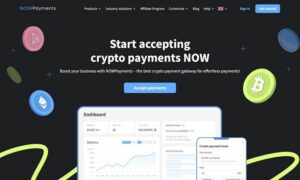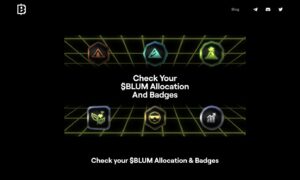Toncoin (TON) is the native cryptocurrency of The Open Network, designed to support digital applications, games, and collectibles like NFTs. The decentralized computer network comprises a Layer 1 blockchain with various components, including a service for translating human-readable domain names, a storage solution similar to Dropbox, and a next-generation web server. The blockchain platform was originally developed by Nikolai Durov, who was renowned for his role in creating the messaging app Telegram, which supports over 900 million active users worldwide. The Open Network’s community-driven architecture fosters innovation and scalability. It includes a master blockchain and many auxiliary chains.
Toncoin’s biggest advantage lies in its symbiotic relationship with Telegram. To be more precise, users can send and receive cryptocurrency directly within the app, which streamlines transactions and makes digital payments more accessible. Based on the Toncoin price prediction, the value of the token may increase by 5% and reach $8.954576 by 2030. If there’s less interest or fewer buyers, Toncoin’s price may decline. Toncoin serves as a gas currency for developers to pay transactions and access services like storage, VPN, etc., and serves as a governance token, allowing users to vote on proposals that shape the future of the blockchain ecosystem.
Toncoin Was Initially Introduced In 2018 By Telegram
Telegram, under the leadership of Pavel and Nikolai Durov, some of the founders of VKontakte, sought to create a blockchain platform to support the massive number of users of the messaging service. To secure the resources necessary to make The Open Network possible, Telegram inaugurated the GRAM token, an analog of Bitcoin, since it was founded on the principles of decentralization. More than half of the collected funds were spent on bandwidth, equipment, colocation, and user verification costs. In 2020, the Securities and Exchange Commission won its case against Telegram, and the court’s decision rested on the specific facts and circumstances of the Initial Coin Offering (SEC).
That same year, Pavel Durov abandoned the project, which was transferred to independent developers from an open-source community – Newton. During the early stages, Telegram released testnet tokens, which had no value, and the remaining tokens were placed into digital contracts stored on the blockchain for future mining. After two years of mining, Toncoin’s supply was depleted, marking the end of the initial distribution phase. The Open Network has added more validators and has increased the supply of tokens in circulation, hence improving the system’s stability and security. With Toncoin’s move to the Proof of Stake, mining is no longer necessary.
Toncoin Serves Multiple Purposes Within The Greater Ecosystem
Users can use Toncoin to pay for goods and services, transfer funds to other users, or participate in decentralized finance. Toncoin excels as a medium of exchange in otherwise harsh legal environments, where governments take advantage of the financial system to place severe restrictions. You can accept Toncoin globally, directly, and at low fees. Toncoin is a new currency that gives mass-market appeal to cryptocurrency payments via an integrated system within the Telegram app, which combines minimum fees, lightning speed, and security. This integration also supports the use of cryptocurrency within Telegram’s decentralized applications, further enhancing its utility.
Toncoin holders can participate in the governance of The Open Network, which is controlled by Elector, Config, and DNS contracts; soon enough, the extra-currency Minter will be introduced to the ecosystem. As mentioned earlier, The Open Network uses a Proof of Stake consensus mechanism, which means that validators are required to confirm transactions and create new blocks. Within this system, owners of Toncoin can stake their funds. Staking pools like Tonstakeer allow cryptocurrency holders to create a consistent stream of income by contributing to the pool of funds so they can augment their holdings with minimal risk.
The Open Network has a decentralized file-sharing and data storage solution, commonly used to store archive copies of blocks and status data, but it’s also available for storing user-uploaded files and other services on the platform. Toncoin can be used to pay for decentralized data storage, which means you can save a lot. Log into your wallet, generate a unique identifier that allows for the sending and receiving of cryptocurrencies, and deposit Toncoin. All transactions are protected by advanced cryptography and can’t be altered or hacked by third parties.
Toncoin Is An Inflationary Token With No Upper Limit
The initial token supply was established at 5 billion TON, minted before the initial launch. The current circulating supply of Toncoin is 3.47 billion. Validators must stake a minimum of 300,000 TON to participate in the consensus process and have access to high-performance hardware on a highly available network. Confiscated funds are burnt, while fishermen who report invalid blocks are granted another portion. Any node can become a fisherman by making a small deposit on the masterchain, after which it can use special transactions to publish invalidity proofs of blocks previously signed and published by validators.
The price of Toncoin is determined by its inflationary nature, which depends on various factors, including demand and market adoption. Toncoin’s supply is designed to increase over time, which means that new tokens are generated during block validation, impacting its value in the long run. The inflation rate tends to decrease with time, but it still guarantees that more coins are created each year to support the growth of The Open Network. The annual inflation rate is 0.6%, established based on the payments made by the community to validators. It’s important to research and understand the various avenues for acquiring Toncoin and select the one that matches your investment goals and risk tolerance.
Final Thoughts
In a message shared on Telegram in 2021, Pavel Durov publicly supported The Open Network and its native cryptocurrency, Toncoin, with complementary strengths for the further development of Web3. The Open Network is technologically ahead compared to other blockchains, particularly bearing in mind its ability to scale to a wide array of users and transactions. In support of Toncoin’s adoption, Telegram offers its users various services, such as NO-SIM signup. The TON wallet makes available a unique address for sending or receiving cryptocurrency.



































